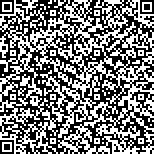下载中心
优秀审稿专家
优秀论文
相关链接
摘要

在大范围、长时序的旱情监测中,遥感技术以其快速、经济和大空间范围获取的特点,弥补了基于台站气象数据旱情监测的不足,为防旱和抗旱决策提供了实时、动态、宏观的辅助决策数据。本文对已有旱情遥感监测方法进行分析和整理,将其总结为基于土壤热惯量、基于土壤波谱特征、基于蒸散模型和基于植被指数的旱情监测方法,并对各类方法从监测原理、适用范围和应用进展等方面进行了阐述。在此基础之上,详细介绍一种结合了全球植被水分指数和短波角度归一化指数的优势建立的旱情遥感监测模型和方法。以2010年春季西南地区旱情为应用案例,从监测模型方法、数据处理流程和应用分析等方面,介绍一种基于植被水分指数的旱情监测方法,并对其监测结果进行统计分析与评价。
Remote sensing technology with the characteristics of rapid, economical and macroscopic provides an important real-time dynamic data source for drought monitoring and decision making. In this paper, monitoring methods based on remote sensing data are overviewed and classifi ed into four kinds: soil thermal inertia methods, soil spectrum characteristic methods, evapotranspiration model methods and vegetation index methods. The monitoring principle, applicability and advances for each method are presented. Combination with the drought of Southwest China occurred in the spring of 2010, a drought remote sensing method using vegetation water indices is introduced including monitoring model, data processing and application analysis. And the monitoring results are statistical analyzed and evaluated.

